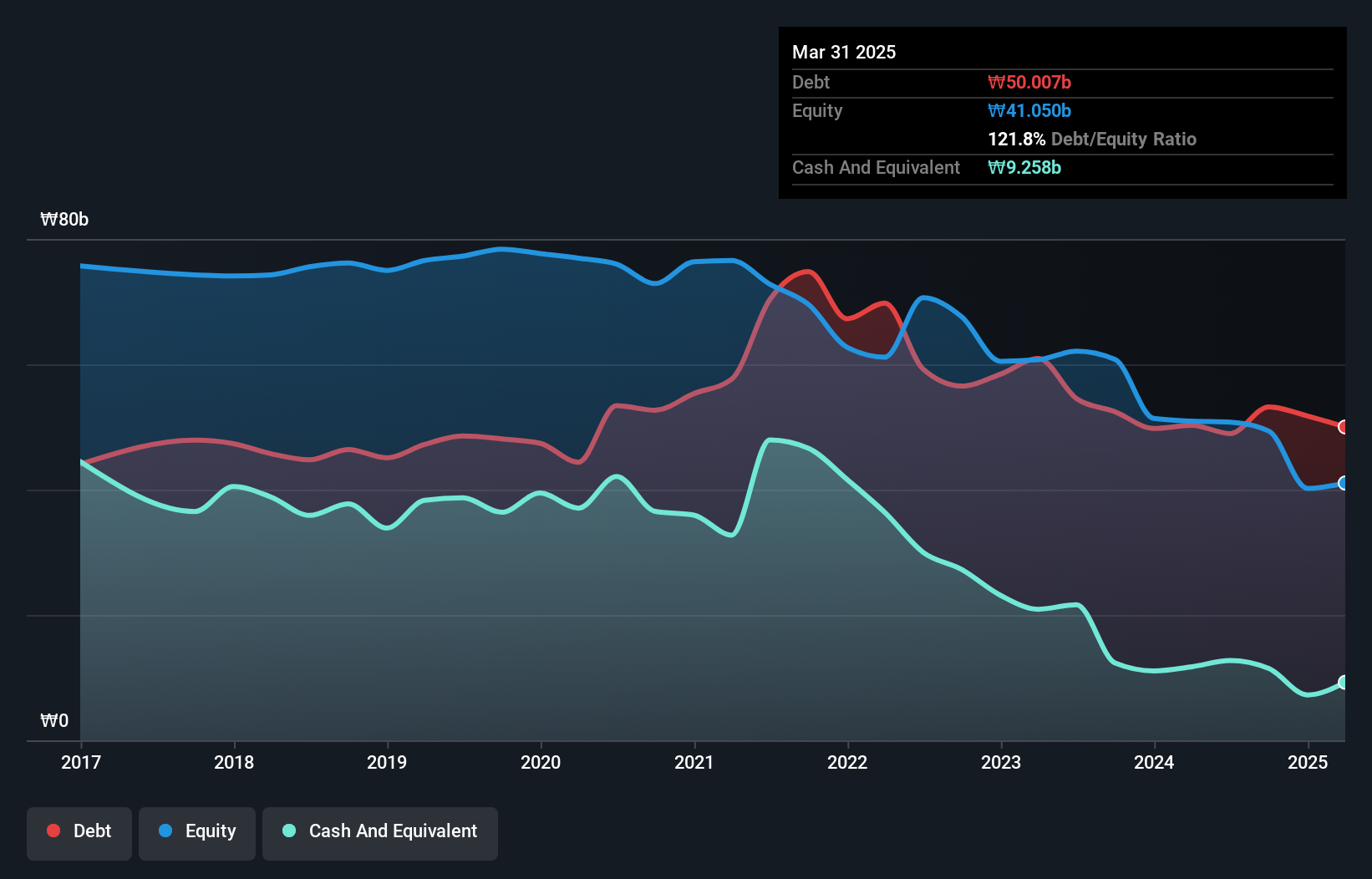Hizeaero (KOSDAQ:221840) Has Debt But No Earnings; Should You Worry?
Legendary fund manager Li Lu (who Charlie Munger backed) once said, 'The biggest investment risk is not the volatility of prices, but whether you will suffer a permanent loss of capital.' When we think about how risky a company is, we always like to look at its use of debt, since debt overload can lead to ruin. We can see that Hizeaero Co., Ltd. (KOSDAQ:221840) does use debt in its business. But is this debt a concern to shareholders?
Why Does Debt Bring Risk?
Debt assists a business until the business has trouble paying it off, either with new capital or with free cash flow. If things get really bad, the lenders can take control of the business. However, a more usual (but still expensive) situation is where a company must dilute shareholders at a cheap share price simply to get debt under control. By replacing dilution, though, debt can be an extremely good tool for businesses that need capital to invest in growth at high rates of return. The first thing to do when considering how much debt a business uses is to look at its cash and debt together.
How Much Debt Does Hizeaero Carry?
As you can see below, Hizeaero had ₩50.0b of debt, at March 2025, which is about the same as the year before. You can click the chart for greater detail. However, it also had ₩9.26b in cash, and so its net debt is ₩40.7b.

A Look At Hizeaero's Liabilities
We can see from the most recent balance sheet that Hizeaero had liabilities of ₩20.3b falling due within a year, and liabilities of ₩50.6b due beyond that. On the other hand, it had cash of ₩9.26b and ₩14.8b worth of receivables due within a year. So it has liabilities totalling ₩46.8b more than its cash and near-term receivables, combined.
When you consider that this deficiency exceeds the company's ₩40.5b market capitalization, you might well be inclined to review the balance sheet intently. In the scenario where the company had to clean up its balance sheet quickly, it seems likely shareholders would suffer extensive dilution. The balance sheet is clearly the area to focus on when you are analysing debt. But you can't view debt in total isolation; since Hizeaero will need earnings to service that debt. So when considering debt, it's definitely worth looking at the earnings trend. Click here for an interactive snapshot.
See our latest analysis for Hizeaero
Over 12 months, Hizeaero made a loss at the EBIT level, and saw its revenue drop to ₩83b, which is a fall of 2.9%. That's not what we would hope to see.
Caveat Emptor
Importantly, Hizeaero had an earnings before interest and tax (EBIT) loss over the last year. To be specific the EBIT loss came in at ₩541m. When we look at that alongside the significant liabilities, we're not particularly confident about the company. We'd want to see some strong near-term improvements before getting too interested in the stock. Not least because it had negative free cash flow of ₩2.0b over the last twelve months. That means it's on the risky side of things. The balance sheet is clearly the area to focus on when you are analysing debt. However, not all investment risk resides within the balance sheet - far from it. Be aware that Hizeaero is showing 2 warning signs in our investment analysis , and 1 of those shouldn't be ignored...
Of course, if you're the type of investor who prefers buying stocks without the burden of debt, then don't hesitate to discover our exclusive list of net cash growth stocks, today.
Have feedback on this article? Concerned about the content? Get in touch with us directly. Alternatively, email editorial-team (at) simplywallst.com.
This article by Simply Wall St is general in nature. We provide commentary based on historical data and analyst forecasts only using an unbiased methodology and our articles are not intended to be financial advice. It does not constitute a recommendation to buy or sell any stock, and does not take account of your objectives, or your financial situation. We aim to bring you long-term focused analysis driven by fundamental data. Note that our analysis may not factor in the latest price-sensitive company announcements or qualitative material. Simply Wall St has no position in any stocks mentioned.
 Wall Street Journal
Wall Street Journal